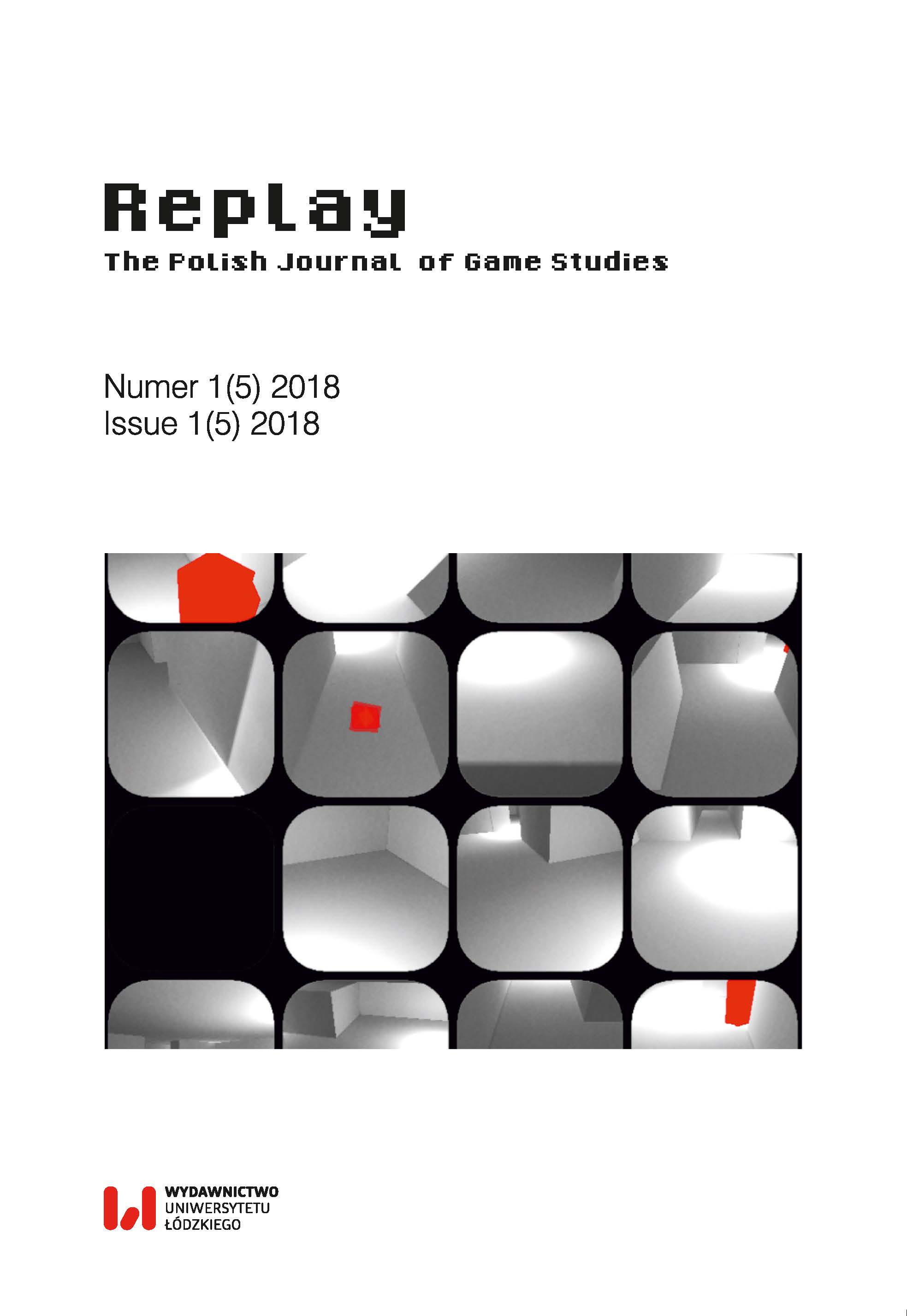PETSCII – A Character Set and a Creative Platform
DOI:
https://doi.org/10.18778/2391-8551.05.02Keywords:
text art, digital culture, retrocomputingAbstract
PETSCII is the built-in character set used on 8-bit Commodore computers, such as the PET, C-64 and Plus/4. The character set and the BASIC environment provided an entry point to rudimentary graphic editing for a generation of hobbyists. Over the years PETSCII has been used for a variety of creative purposes: for example games, demos, telecommunications, videos, books and fine art have been created using the graphical symbols. Through the analysis of existing art works and our own hands-on project – a graphics editor – we dig deeper into the specific properties of the character set. In this article we show how the fixed symbols set the frame for what is possible and how, on the other hand, they provide grounds for creative experimentation, display of skill and recognizable styles.
References
Bagnall, B. (2005). On the edge: The spectacular rise and fall of Commodore. Winnipeg: Variant Press.
Google Scholar
Carlsson, A. (2017). Beyond encoding: A critical look at the terminology of text graphics. WiderScreen, 20(1–2). Retrieved from http://widerscreen.fi/numerot/2017–1-2/beyond-encoding-a-critical-look-at-the-terminology-of-text-graphics/
Google Scholar
Carlsson, A., & Miller, A.B. (2012). Future potentials for ASCII art. In: K. Zreik, & R. Gareus (Eds.), Postdigital art – Proceedings of the 3rd computer art congress (pp. 13–24). Paris: Europia.
Google Scholar
Danet, B. (2003). Pixel patchwork: ‘Quilting in time’ online. Textile, 1(2): 118–143.
Google Scholar
DOI: https://doi.org/10.2752/147597503778053072
Franke, H. W. (1971). Computer graphics – computer art. London: Phaidon Press.
Google Scholar
Giraldo Arteaga, M. (2014, September 3). Generative ebook covers [Blog post]. Retrieved from https://www.nypl.org/blog/2014/09/03/generative-ebook-covers
Google Scholar
Hardagon, M. (2011). Like city lights, receding: ANSi artwork and the digital underground 1985–2000. (Unpublished master’s thesis.) Concordia University.
Google Scholar
Heikkinen, T., & Reunanen. M. (2017). Rock, joka tiesi liikaa [Rock who knew too much]. WiderScreen, 20(1–2). Retrieved from http://widerscreen.fi/numerot/2017–1-2/rock-tiesi-liikaa/
Google Scholar
Higgins, H. (2009). The grid book. Cambridge, MA: MIT Press.
Google Scholar
Lindsay, C. (2003). From the shadows: Users as designers, producers, marketers, distributors and technical support. In: N. Oudshoorn & T. Pinch (Eds.), How users matter: The co-construction of users and technologies (pp. 29–50). Cambridge, MA: MIT Press.
Google Scholar
Maher, J. (2012). The future was here: The Commodore Amiga. Cambridge, MA: MIT Press.
Google Scholar
Manovich, L. (2001). The language of new media. Cambridge, MA: MIT Press.
Google Scholar
Meyers, R. (2017). Keys of fury – Type in beyond the scrolling horizon. WiderScreen, 20(1–2). Retrieved from http://widerscreen.fi/numerot/2017–1-2/keys-of-furytype-in-beyond-the-scrolling-horizon/
Google Scholar
Moe, H., & Van den Bulck, H. (Eds.). (2016). Teletext in Europe: From the analog to the digital era. Gothenburg: Nordicom.
Google Scholar
Montfort, N., Baudoin, P., Bell, J., Bogost, I., Douglass, J., Marino, M.C., Mateas, M., Reas, C., Sample, M., & Vawter, N. (2012). 10 PRINT CHR$(205.5+RND(1)); : GOTO 10. Cambridge, MA: MIT Press.
Google Scholar
Musturi, T. (2017). Unplanned blocky puzzles – Creating PETSCII for the Commodore 64. WiderScreen, 20(1–2). Retrieved from http://widerscreen.fi/numerot/2017–1-2/unplanned-blocky-puzzles-creating-petscii-for-the-commodore-64/
Google Scholar
Paul, L.J. (2013). Text-mode and the live PETSCII animations of Raquel Meyers: Finding new meaning through live interaction. Leonardo Electronic Almanac, 19(3). Retrieved from http://www.leoalmanac.org/wp-content/uploads/2013/11/LEAVol19No3-Paul.pdf
Google Scholar
Polanyi, M. (1966). The tacit dimension. Chicago, IL: University of Chicago Press.
Google Scholar
Reas, C., & Fry, B. (2014). Processing: A programming handbook for visual designers and artists (2nd ed.). Cambridge, MA: MIT Press.
Google Scholar
Saarikoski, P., Suominen, J., & Reunanen, M. (2017). Pac-man for the VIC-20: Game clones and program listings in the emerging Finnish home computer market. Well Played, 6(2): 7–31.
Google Scholar
Schön, D. (1991). The reflective practitioner: How professionals think in action. Aldershot: Ashgate Publishing.
Google Scholar
Silvast, A., & Reunanen, M. (2014). Multiple users, diverse users: Appropriation of the personal computer by demoscene hackers. In: G. Alberts, & R. Oldenziel (Eds.), Hacking Europe: From computer cultures to demoscenes (151–163). Berlin: Springer.
Google Scholar
DOI: https://doi.org/10.1007/978-1-4471-5493-8_7
Xu, X., Zhang, L., & Wong, T. (2010). Structure-based ASCII art. ACM Transactions on Graphics, 29(4): 52:1–52:10.
Google Scholar
DOI: https://doi.org/10.1145/1778765.1778789
Downloads
Published
How to Cite
Issue
Section
License

This work is licensed under a Creative Commons Attribution-NonCommercial-NoDerivatives 4.0 International License.










